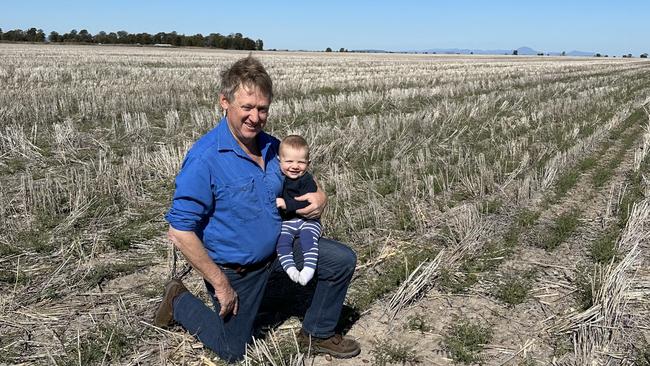Farmers planning for a dry old time as El Nino looms
The weather bureau may be reluctant to declare El Nino, but farmers are already preparing for dry times ahead.

Farmers have not waited for the Bureau of Meteorology’s official El Nino declaration and are planning ahead for drier than usual conditions as the effects of the weather phenomenon play out across the country.
While other international meteorological agencies have already declared El Nino is in effect, the BOM this week retained its “El Nino alert”, indicating a 70 per cent chance of it developing.
Already, however, the grain-growing regions of northern NSW and southern Queensland have recorded lower-than-average winter rain, and it is not forecast to improve.
As for most farmers, the long-term forecast was at the front of Moree grain grower Matthew Madden’s mind when he planted his winter crop, which is due for harvest in November.
“Every farmer makes a decision based on the risk profile, and the signs to us were that it’s going to be a dry summer so we decided to plant a bigger winter crop in lieu of the summer crop that would be planted later on this year,” Mr Madden said.
“We won’t know if that’s the right or wrong decision until February or March, but that’s the decision we took.
“Other people haven’t done that, but they might reassess when we get into late spring if the El Nino is really starting to bite.”
A key factor behind the decision-making of farmers is the availability and preservation of subsoil moisture. Along with the usual wheat and barley crops, Mr Madden has planted deep-rooted chickpeas in anticipation of drier conditions.
“Even in El Ninos in the past, we’ve been able to grow crops, as long as we’ve got the moisture stored in the soil, without a lot of rain to actually produce a viable crop,” he said.
The Australian Bureau of Agricultural and Resource Economics and Sciences estimated the national grain crop would be 39 per cent lower than last year’s, which was buoyed by three years of La Nina-induced rain.
ABARES predicts the country’s crop value will drop from $56.2bn to $44.1bn. That’s still significantly higher than average and would be the third highest value on record.
Some farmers, particularly in the horticulture industry, were expecting bigger crops.
ABARES director Jared Greenville said after consecutive good seasons, most of the industry was financially sound.
“We’re in a good position to manage the initial impact,” Dr Greenville said.
“It will be a multi-year situation that will be the thing to watch.”
Dr Greenville said decent pasture growth in recent years and full water storages would provide a buffer for many livestock and horticulture producers in the country’s east.
“You can actually get a positive bounce out of some of the drier conditions, particularly for wine grape growers where you don’t have the same level of pests and infection with fungicides that you do have to worry about in wet conditions,” Dr Greenville said.
Rural Bank senior insights manager James Maxwell said the longer the duration of the El Nino conditions, the greater the impact it would be likely have on successive crops.
“It is a gradual process to get to that El Nino threshold, it’s not like a flick of the switch … and it’s already starting to have an impact,” Mr Maxwell said.
“Queensland and the northern half of NSW (are currently affected) and from a cropping perspective that’s quite significant because they are both really large production areas.”




To join the conversation, please log in. Don't have an account? Register
Join the conversation, you are commenting as Logout